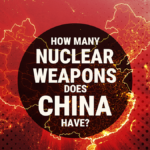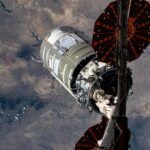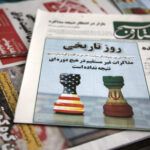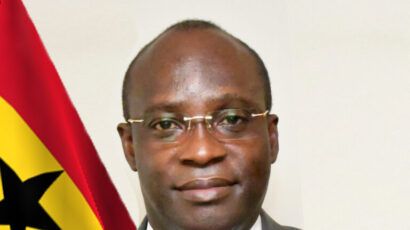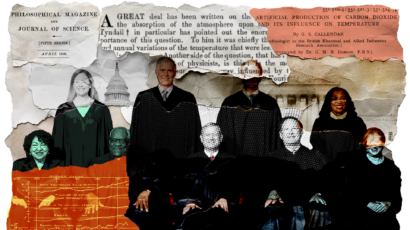Question for the candidates: Should the president retain the sole authority to order the use of nuclear weapons?
By Mackenzie Knight | September 19, 2024

Editor’s note: Mackenzie Knight, a senior research associate at the Federation of American Scientists and co-author of the Bulletin’s Nuclear Notebook, proposes a series of seven questions on presidential launch authority, modernization of nuclear weapons, and arms control that journalists and citizens should ask the 2024 presidential candidates. (This is part of an “experts comment” series of questions for the candidates.)
The US president’s nuclear launch authority
Background: The sole authority to order the use of nuclear weapons is perhaps the most consequential power held by the president of the United States. At the dial of a phone, the president holds in their hands the power of 400 intercontinental ballistic missiles (ICBMs), 14 ballistic missile submarines (SSBNs), and 66 strategic bombers—and their approximately 1,800 deployed nuclear warheads. There is little logistical or legal action anyone can take to halt a president’s order for nuclear use once it has been issued, and the president would not be required to consult with any other officials or advisors before making such an order. Some experts posit that US nuclear launch authority should be changed, as it relies on the constant and utmost rationality of one individual and heightens the risk of nuclear weapons being used by miscalculation or misunderstanding.
Questions for the candidates:
- Do you believe that one person, the president of the United States, should have such authority? Would you be willing to consider limiting your powers as president by altering US nuclear launch authority away from sole authority?
In the case of an incoming attack, experts estimate that the president would have less than 10 minutes to decide to launch nuclear weapons. But it could potentially be a false alarm, misunderstanding, or conventional attack. Once the president orders the launch of ICBMs, the order would be transmitted in approximately one minute and the missiles launched in two. Once launched, ICBMs cannot be halted or recalled.
- If, as president, you were suddenly alerted that warning systems had detected a possible incoming nuclear attack on the United States, what questions would you ask before making a decision on how to respond?
The United States has never adopted a no-first-use policy for nuclear weapons. Instead, it reserves the right to employ nuclear weapons first in a conflict.
- As the only official with the authority to order the launch of US nuclear weapons, in what scenarios would you contemplate the first use of nuclear weapons? How would you assess the potential costs versus benefits of a first strike?
Modernization of the US arsenal
The United States is planning to spend more than $1 trillion over the next 30 years to modernize its nuclear arsenal, and the price tag continues to grow as programs repeatedly face cost overruns and delays. The most notable example is the Air Force’s new Sentinel ICBM program, which the Pentagon certified to continue in July despite its questionable strategic value, an 81-percent increase in cost estimate since 2020, and several-year schedule delays. In addition, the new Columbia-class ballistic missile submarines and the long-range standoff cruise missile are facing delays, and the plutonium modernization program has been mired in cost and schedule overruns for several years.
- What will you do to improve management and oversight of nuclear modernization programs to ensure that the Department of Defense cannot spend limitless amounts of taxpayer dollars on nuclear weapons programs?
The rationale for ICBMs in a post-Cold War era is questionable at best. Government evaluations have revealed that Trident SLBMs are “almost equal in speed and reliability” to ICBMs, and SSBNs remain “virtually undetectable.” Silo-based ICBMs, on the other hand, are sitting-duck targets that invite a massive strike on the United States. The seemingly cemented role of ICBMs in US nuclear posture has been upheld over the decades since the Cold War largely by politics and lobbying from nuclear weapons contractors and members of Congress who benefit from the continued existence of ICBMs, despite moves by multiple administrations and defense officials to reduce or eliminate their role.
- Would you be willing to order a review of the strategic necessity of ICBMs and consider eliminating them or reducing their deployed number?
Arms control
The New Strategic Arms Reduction Treaty (New START) between the United States and Russia will expire in February 2026. As a follow-on arms control agreement appears unlikely given Russia’s current unwillingness to come to the negotiating table, the expiration of New START will bring an end to any limits on the world’s two largest nuclear powers for the first time in decades and during a period of heightened tensions and military conflict.
- Will you commit to pursuing diplomacy and arms control with Russia despite heightened tensions and Russian nuclear rhetoric? Do you believe nuclear arms control still serves an important role in the current and future security environment?
In the wake of reports on China’s nuclear expansion, assumptions about China’s goal and motivation are spreading. Government officials and pundits claim that China is striving for nuclear parity with the United States, and nuclear hawks are calling for an increase in the US nuclear arsenal, more aggressive nuclear posturing, and new nuclear weapons programs in response.
- What will you do to prevent an arms race between the United States and China? Will you prioritize and engage in diplomacy with China rather than allowing worst-case-scenario assumptions to potentially escalate tensions?
Has Russia’s war in Ukraine changed your view of the role of nuclear weapons? By Siegfried S. Hecker
What will you do to avoid a nuclear arms race with Russia and China? By Steven Pifer
What is your plan to prevent the next dangerous and expensive nuclear arms race? By Laura Grego
How many nuclear warheads does the United States need? By Tom Z. Collina
Should the president retain the sole authority to order the use of nuclear weapons? By Mackenzie Knight
Do you agree with other world leaders that the use of—or threat to use—nuclear weapons is “inadmissible”? By Daryl G. Kimball
How will you reassure allies worried about the credibility of the US security guarantees? By Sara Bjerg Moller
What will you do if Iran gets the bomb? By Henry Sokolski
How will you deter North Korea’s aggression without deteriorating the situation on the Korean Peninsula? By Eliana Johns
Will the United States sign and ratify the Treaty on the Prohibition of Nuclear Weapons? By Alicia Sanders-Zakre
Together, we make the world safer.
The Bulletin elevates expert voices above the noise. But as an independent nonprofit organization, our operations depend on the support of readers like you. Help us continue to deliver quality journalism that holds leaders accountable. Your support of our work at any level is important. In return, we promise our coverage will be understandable, influential, vigilant, solution-oriented, and fair-minded. Together we can make a difference.



